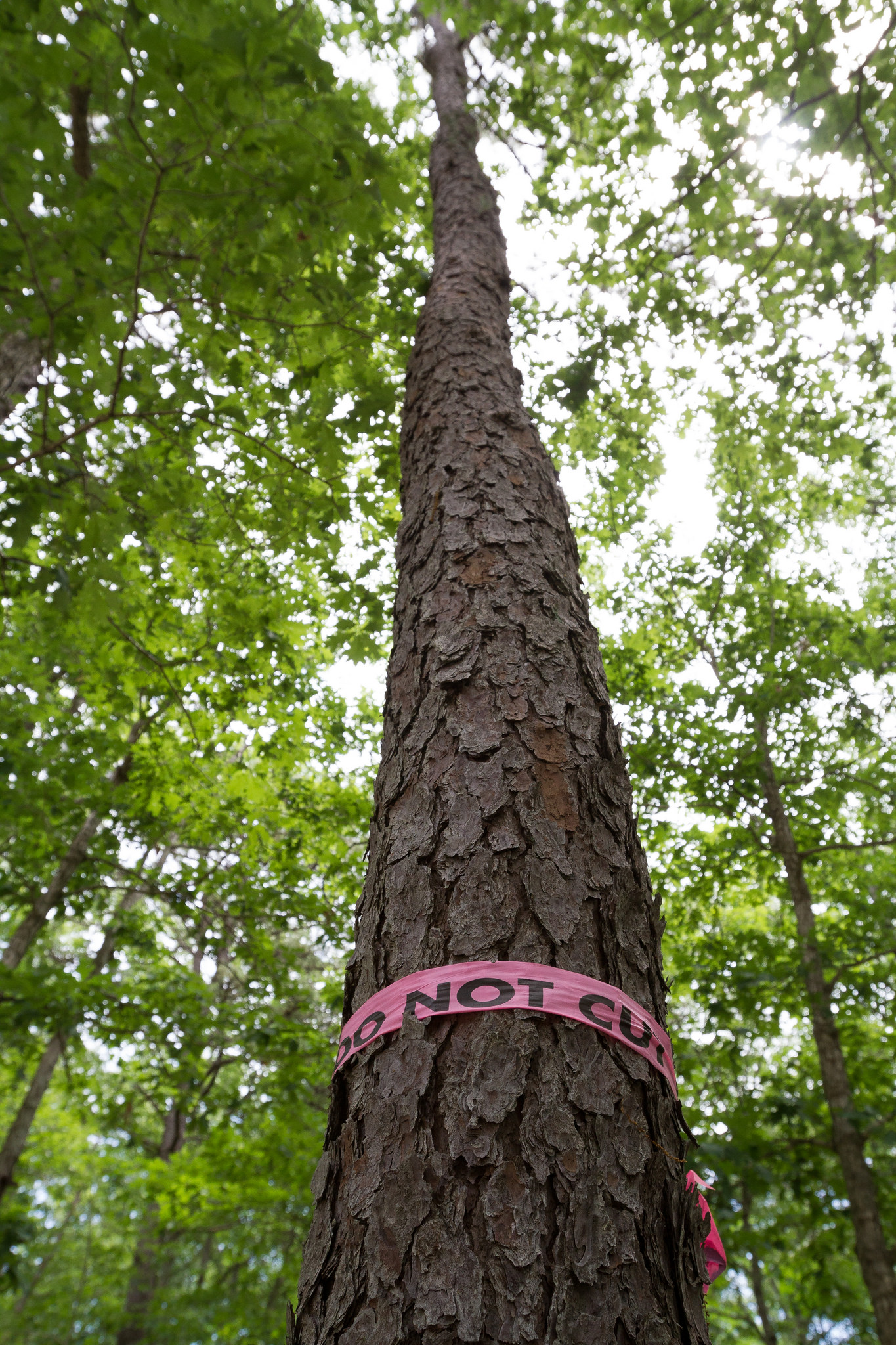A healthier forest with less chance of catastrophic fire over time is an aspect Stockton researchers will study as the second phase of the Stockton Forest Management Plan begins.
A cut-to-length tree harvester, operated by Colin McLaughlin of Advanced Forestry Solutions based in Pittsgrove, NJ, cut down selected trees in the woods off Vera King Farris Drive on June 30. Trees are being removed from Stockton’s woods over the coming weeks under the university’s Forest Management Plan, which is the state’s first comprehensive stewardship plan on public land within the region.
As trees came down, sunlight began to reach all the way through to the forest floor and the space began to open up. Thinning the forest has been shown in numerous states to prevent Southern pine beetle infestations, reduce fire danger and ultimately create a healthier forest that can enhance overall biodiversity in the landscape.
McLaughlin carefully navigated the heavy machine around the trees marked with bright pink ribbons labeled “Do Not Cut.” The healthiest trees will not be removed. The downed oak trees will became fire wood and the pine trees will be sent to Glatfelter Paper Mill in Spring Grove, PA, where they will be processed into pulp and converted to high quality paper. Robert Williams, of Pine Creek Forestry, a certified forester with 40 years of experience was hired by the university as a consultant to write and carry out the plan.
Dr. George Zimmermann, a Stockton professor of Environmental Studies who researches forest management with a specialty in the ecology of the Atlantic white-cedar, climbed into the harvester to cut down the first tree—a ceremonial start to the second phase of the management -more- Forest Thinning/ page 2 plan. Phase one happened earlier this year when a section of woods underwent the first of planned prescribed burns.
Zimmermann is teaching a summer intensive research course emphasizing forest measurements, which gives students the opportunity to design research experiments directly related to Stockton’s forest management.
“Stockton’s forest gives character to our campus and defines who we are. It’s a living laboratory that provides research opportunities that very few students are offered. It’s also a forest that needs our assistance now,” Zimmermann said.
Dr. Jamie Cromartie, associate professor of Entomology, plans to use various insect trapping methods, including putting sugar bait on trees that were not removed, to see how moths and other insects respond to the thinning and whether new species are found. “We have a lot of specimens and data from many years of collecting in these forests, now we will see whether restoring the forest also increases the abundance of characteristic Pine Barrens insects,” said Cromartie.

